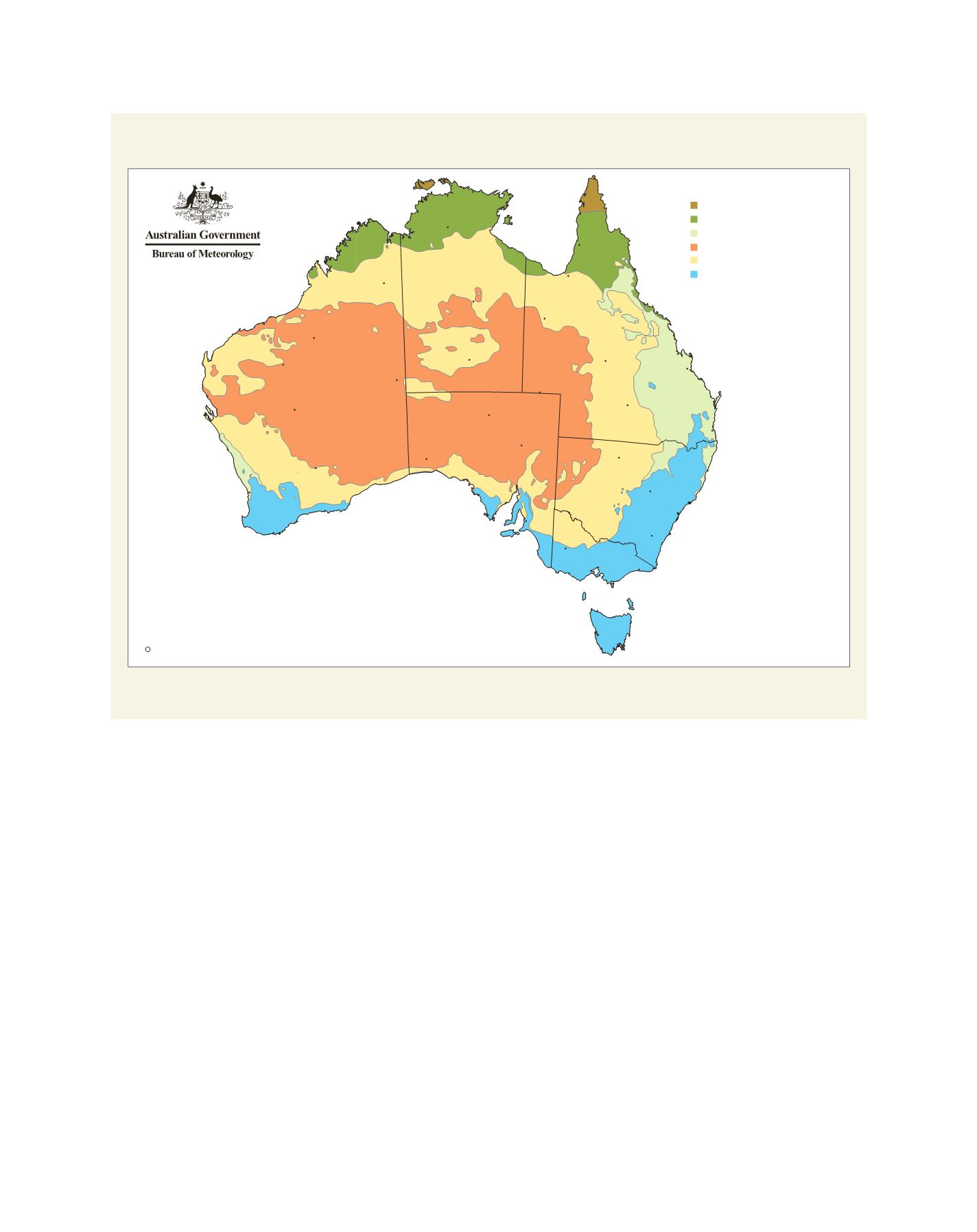

[
] 120
Australia’s climate zones: just over two-thirds of mainland Australia is classified as arid or semi-arid
Based on a modified Koeppen classification system
Based on a standard 30-year climatology (1961-1990)
Commonwealth ofAustralia, 2005
c
Projection: Lambert conformal with standard parallels 10 o S, 40 o S.
Geraldton
PERTH
Albany
Carnarvon
Port
Hedland
Wiluna
Telfer
Broome
Kalumburu
Halls Creek
Giles
Kalgoorlie-
Boulder
Esperance
Port
Lincoln
Port
Augusta
Ceduna
ADELAIDE
Marree
Oodnadatta
Alice Springs
Tennant
Creek
Katherine
DARWIN
Cook
Weipa
Kowanyama
Cairns
Townsville
Mackay
Normanton
Mount Isa
Birdsville
Mildura
Horsham
MELBOURNE
Warrnambool
Orbost
CANBERRA
SYDNEY
Dubbo
Coffs
Harbour
BRISBANE
Charleville
Rockhampton
Longreach
Bourke
Cape Grim
St. Helens
HOBART
Strahan
Newman
Subtropical
Desert
Grassland
Temperate
Tropical
Equatorial
Major classification groups
Source: BoM
As the land dries and these regions become vulnerable to
increased desertification, salinity becomes an even greater
issue. Since European settlement, native land clearance,
farming and irrigation have created an imbalance in the
hydrological cycle in many agricultural areas, with rising
groundwater resulting in severe dryland salinity.
In 2000, the Australian Bureau of Statistics (ABS) esti-
mated that 5.7 million hectares of Australia was at high risk
of developing salinity. This could triple to about 17 million
hectares by 2050, seriously impacting agriculture, ecosys-
tems and infrastructure.
The vital role of groundwater in the Australian economy
will become more critical as surface water becomes scarcer
in arid and semi-arid regions. Its importance was high-
lighted in a 2014 report commissioned by the National
Centre for Groundwater Research and Training (NCGRT)
in the first attempt to quantify its value.
The report, by Deloitte Access Economics, found that
groundwater helps earn the nation a conservatively estimated
$A34 billion every year. It estimated annual groundwater
extraction at approximately 3,500 gigalitres, with 58 per cent
used to grow food, 12 per cent for mining and 17 per cent
used in manufacturing. About 13 per cent is used for water
supplies in regional and metropolitan communities.
Pressure on Australia’s groundwater reserves is also inten-
sifying as the population increases. Australia has the fastest
population growth of any major developed country due to
immigration — and it shows no signs of slowing. Currently
standing at 24 million, ABS says Australia’s population could
double to 48 million people by 2061.
The key question that needs answering now is how such
rapid growth, combined with the uncertainty of climate
change, will impact on our water systems and the countless
industrial, agricultural, community and environmental users
that rely on them. There are no large water sources still to be
found in Australia, yet water use is expected to at least double
by the middle of this century.
Managing the cumulative environmental impact of multiple
actions on the baseflow of rivers, springs, wetlands and other
groundwater-dependent ecosystems is a huge challenge. The
task becomes even more complex when a growing population
and extreme weather patterns are added to the equation.
An estimate widely accepted by scientists and policy-
makers is that groundwater directly supplies more than
L
iving
L
and
















